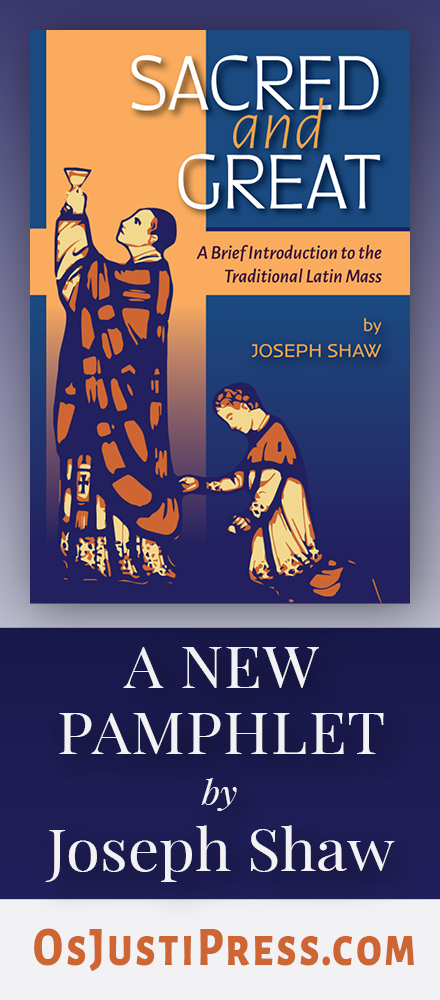As many NLM readers may know, a petition with 500 signatures was handed over at the end of December to ask once more the Archbishop of Milan Dionigi Card. Tettamenzi, to allow every Ambrosian priest to celebrate the Extraordinary form of the Milanese Rite, according to "Summorum Pontificum" provisions.
During a Mass celebrated in the Cathedral for the Feast of the Epiphany of Our Lord, the Archbishop and his all-powerful Vicar for the Evangelization and Archpriest of the Metropolitan Cathedral, Msgr. Luigi Manganini, gave their answer to the desolate Milanese flock:



Former Head of the State, life Senator and avowed Catholic Francesco Cossiga sharply criticized Card. Tettamanzi's rebellion to the Papal authority and lack of tolerance towards the legitimate requests from the faithful to liberalize the Traditional Ambrosian Rite, in opposition to the total support given to such horrors in the Cathedral, and asked whether the next step will be a belly dance show to celebrate the Christian-Muslim dialogue. He ironically concluded "just think he could even be elected Pope!"
The Milanese Curia angrily replied that this kind of dances have been common for years in St. Peter's Basilica... Maybe curial spokesmen were not informed of the radical change in Papal Ceremonies after Msgr. Guido Marini replaced his ill-famed predecessor!
The Milanese faithful can only long Card. Tettamanzi's 75th birthday next year.
Saturday, January 12, 2008
The Milanese faithful ask...the Archbishop answers
Nicola De GrandiMore recent articles:
The Gospel of Nicodemus in the Liturgy of EastertideGregory DiPippo
By “the Gospel of Nicodemus”, I mean not the apocryphal gospel of that title, but the passage of St John’s Gospel in which Christ speaks to Nicodemus, chapter 3, verses 1-21. This passage has an interesting and complex history among the readings of the Easter season. For liturgical use, the Roman Rite divides it into two parts, the second of which...
“The Angel Cried Out” - The Byzantine Easter Hymn to the Virgin MaryGregory DiPippo
In the Byzantine Divine Liturgy, there are several places where the priest sings a part of the anaphora out loud, and the choir makes a response, while he continues the anaphora silently. In the liturgy of St John Chrysostom, which is by far the more commonly used of the two anaphoras, the priest commemorates the Saints after the consecration and ...
The LavaboMichael P. Foley
Lost in Translation #124 After the incensation, the priest goes to the Epistle side and washes his hands, reciting Psalm 25, 6-12: Lavábo inter innocentes manus meas: et circúmdabo altáre tuum, Dómine.Ut audiam vocem laudis: et enarrem universa mirabilia tua.Dómine, dilexi decórem domus tuae: et locum habitatiónis gloriae tuae.Ne perdas cum impii...
Spinello Aretino’s Altar of Ss Philip and JamesGregory DiPippo
At the very end of the 14th century, the painter Spinello di Luca Spinelli (1350 ca. - 1410 ca.), usually known as Spinello Aretino (from Arezzo) was commissioned to make a frescoed altarpiece for the Dominican church of his native city. The altar itself no longer exists; it was dedicated to the Apostles Philip and James, whose feast is traditional...
A Medieval Hymn for EastertideGregory DiPippo
Many medieval breviaries, including those of the Sarum Use, the Cistercians, Carmelites and Premonstratensians, have a hymn for the Easter season which is not found in the Roman Breviary, Chorus novae Jerusalem by St Fulbert, bishop of Chartres, who died in 1029. The original version of the Latin text, and the English translation of John Maso...
Two Upcoming Events from the Durandus InstituteGregory DiPippo
Our friend James Griffin of The Durandus Institute for Sacred Liturgy and Music wishes all our readers a joyous Easter season, by presenting two opportunities, at least for those in southeast Pennsylvania, to celebrate.First, this coming Sunday at 5pm, there will be a solemn Vespers in the traditional Latin rite for the Second Sunday after Easter a...
Letter to a Maximalist Music Director in a Minimalist WorldPeter Kwasniewski
Auguste Danse, Study of Three Singers (detail)The following is based on a real letter.Dear Friend,I’m sorry to hear that you’re experiencing some “ups and downs” with regard to the liturgy there, though it’s hardly surprising in a way. Your diocese is not well known for liturgical propriety or taste, and, beyond that, priests mostly have control ov...
The Tomb of St Peter Martyr in Milan’s Portinari ChapelGregory DiPippo
Here are some great photos from our Ambrosian correspondent Nicola de’ Grandi of the Portinari Chapel at the Basilica of St Eustorgio in Milan. They were taken during a special night-time opening made possible by a new lighting system; as one might well imagine, the Italians are extraordinarily good at this sort of thing, and more and more museum...
Recommended Art History and Artistic Practice Text Books for Homeschoolers... and Everyone Else Too!David Clayton
I want to recommend the Catholic Heritage Currricula texts books to all who are looking for materials for courses in art history, art theory and artistic practice at the middle-school or high-school level. These books present a curriculum that combines art history, art theory, and a theory of culture in a Catholic way. Furthermore, they provide the...
Launching “Theological Classics”: Newman on the Virgin Mary, St Vincent on Novelty & Heresy, Guardini on Sacred SignsPeter Kwasniewski
At a time of turmoil, nothing could be better or more important than rooting ourselves more deeply in the Catholic tradition. One of my favorite quotations is by St. Prosper of Aquitaine (390-455), writing in his own age of chaos: “Even if the wounds of this shattered world enmesh you, and the sea in turmoil bears you along in but one surviving shi...




















